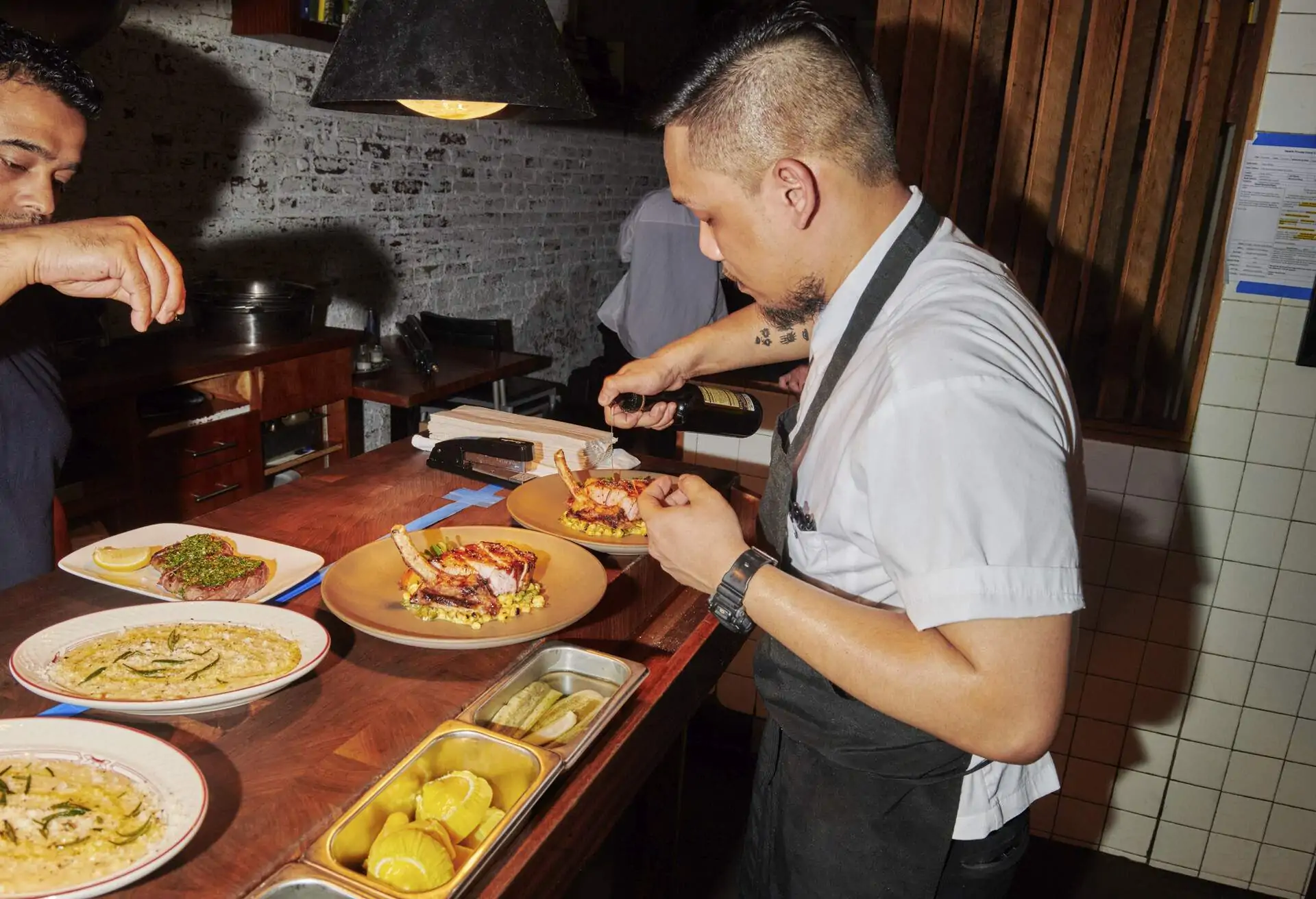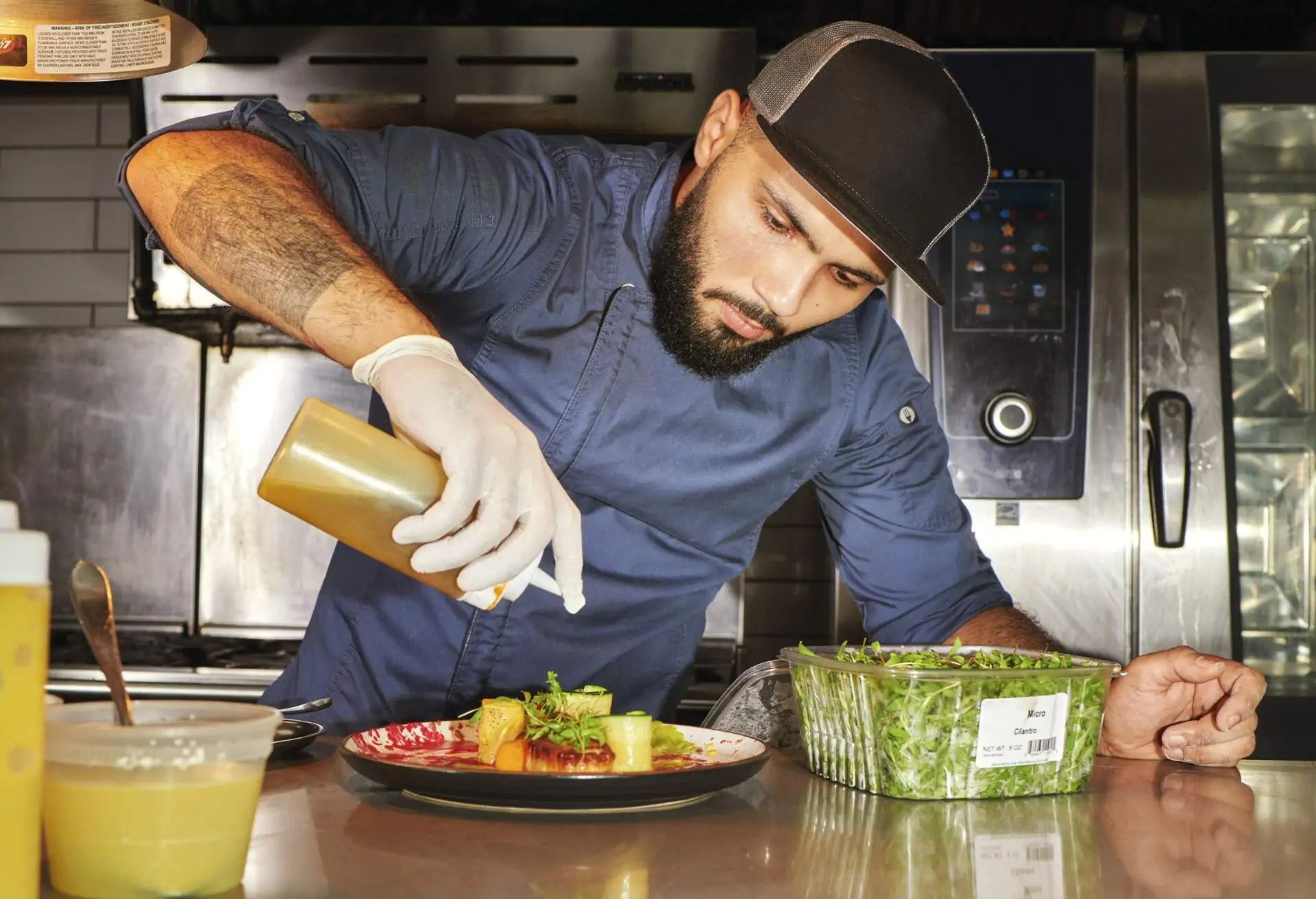Understanding restaurant industry terms is more than sounding knowledgeable. It helps ensure that communication is clear, the service is efficient, and everyone is on the same page. Whether you’re new to the industry or just brushing up, here’s a handy glossary to keep you in the know from A to Z.
A is for À la carte
À la carte originates from France, translating to ‘on the card’ or ‘according to the card’. In the restaurant industry, it refers to ordering individual dishes from a menu, with each item priced separately. This contrasts with set menus or tasting menus, where dishes are pre-selected and offered at a fixed price. Opting for à la carte gives diners the flexibility to choose and curate their dining experience, selecting only the dishes they fancy.
B is for Back of House (BOH)
In the busy restaurant landscape, back of house (BOH) is the behind-the-scenes area where the magic truly happens. These spaces are usually hidden from the diners’ view and include the kitchen. Of course, some kitchens are in full view of diners, but you’re unlikely to have storage areas housing fresh ingredients and supplies as well as staff quarters anywhere else but BOH.

C is for Covers
In restaurant parlance, ‘covers’ is a term that holds significant importance for both operational and revenue perspectives. It refers to the number of guests a restaurant has served during a particular service or the total seating capacity it can accommodate at any given time. Monitoring covers helps restaurants gauge how well they’re performing.
D is for Docket
A docket is often synonymous with ‘ticket’ or ‘chit’ in some establishments. It’s the written or digital order that communicates a diner’s request from the front of house to the kitchen. Each docket details the dishes ordered, any specific modifications and sometimes the table number. As orders come in, chefs rely on dockets to queue and prepare dishes in a timely and accurate manner.
E is for Expo (Expeditor)
Within the orchestrated chaos of a restaurant kitchen, the Expeditor (or Expo) is responsible for organising and coordinating orders, making sure that dishes are prepared to perfection and presented as requested. Their keen eye checks each plate for accuracy before it heads to the dining room. Expos are often the bridge from the kitchen to the front-of-house team, helping to create a rhythm between the two. In essence, they’re the final quality control, guaranteeing every guest receives a harmonious dining experience.
F is for Front of House (FOH)
Commonly abbreviated as FOH, front of house is the stage where the restaurant’s performance unfolds. It includes all the areas that diners interact with, from the welcoming entrance and the bustling dining room to the bar and sometimes even the outdoor area. Here, the decor, ambience and service staff come together to create the dining experience. Whether guests are being greeted, seated, served or enjoying a cocktail at the bar, FOH sets the tone and plays a major role in a guest’s overall dining journey.
G is for General Manager (GM)
The linchpin of a restaurant’s operations, the general manager oversees the day-to-day running of the establishment. Their roles include everything from staff management to customer satisfaction and financial oversight. General managers oversee the smooth operation of the FOH and BOH, building on the restaurant’s success and reputation.
H is for Head Chef
At the heart of the kitchen, the head chef is responsible for crafting the menu. They oversee the quality of dishes and lead the kitchen brigade, with their culinary vision and leadership setting the tone for the restaurant’s offerings and reputation.
I is for Inventory
A central part of restaurant management, inventory refers to the tracking of all ingredients, beverages and supplies. Proper inventory management ensures that the restaurant operates at a high level while minimising food waste and remaining cost-effective.
J is for Jigger
The jigger is designed as a double-sided measuring instrument and crafted to pour out precise quantities of liquids, be it spirits, syrups or juices. Its precision sees to it that every cocktail maintains a consistent flavour and balance. Using a jigger allows bartenders to replicate the exact taste and strength of drinks time and time again and guarantee a consistent, delightful experience for diners.
K is for Kitchen Brigade
Originating from the French brigade system, the kitchen brigade is the structured hierarchy within a kitchen. All the way from the executive chef down to the commis and kitchen porters, each member has a defined role, which establishes efficient and coordinated meal preparation.
L is for Larder
Within the intricate layout of a professional kitchen, the larder holds a special place. Commonly dubbed the ‘cold kitchen’, this section is dedicated to the crafting of cold dishes, including refreshing salads, intricate desserts and just about anything else that doesn’t require an oven. Beyond preparation, the larder serves as a place for ingredients, allowing them to remain fresh and ready for serving.
M is for Mise en Place
Rooted in French culinary tradition, “mise en place” translates to “everything in its place.” This philosophy goes beyond preparation and has become a ritual for chefs. By meticulously organising and arranging ingredients before the cooking process begins, chefs not only streamline their workflow but also set the stage for culinary excellence.
N is for No-shows
A term that resonates with frustration in the restaurant world, ‘no-shows’ describe guests who book a table but unexpectedly fail to arrive. This seemingly simple act poses significant challenges for restaurateurs. Beyond the immediate loss of revenue for that table, no-shows disrupt the rhythm of service. For an industry operating on tight margins and meticulous planning, such unpredictability can have cascading effects on the evening’s operations and profitability.
O is for Open Table
Not just the name of our reservation platform, an open table is also a term indicating a table available for seating.
P is for Prix Fixe
Hailing from the French dining tradition, ‘prix fixe’ translates to ‘fixed price’. This dining format offers guests a curated experience, where they select from a limited set of options for each course, all for a predetermined price. A prix fixe menu is a showcase of the chef’s culinary prowess and often highlights signature dishes or seasonal specialities.
Q is for Quenelle
Quenelle serves a dual purpose in the culinary lexicon. As a technique, it refers to the artful process of moulding soft foods, such as mousses or ice creams, into elegant, oval forms using a pair of spoons. Simultaneously, in traditional French cuisine, a quenelle is a delicacy in its own right: a sumptuous dumpling made from finely ground fish or meat, bound together with a light cream mixture before being poached to perfection. Both interpretations highlight the precision and sophistication inherent in gourmet cooking.
R is for Reservations
The system of pre-booking tables. Reservations help restaurants anticipate the number of guests and plan service accordingly thanks to a restaurant booking system, which also helps navigate challenges like no-shows or last-minute cancellations.
S is for Station
The kitchen is often divided into designated areas, each tailored for the preparation of a distinct category of food. These areas are known as ‘stations” and are meticulously organised to streamline the cooking process. For instance, the salad station is equipped with fresh greens and dressings, the grill station boasts high-heat grills for meats, and the dessert station is the home of sweet creations. Each station operates like a mini-kitchen for increased efficiency and consistency in every dish.
T is for Turnover
A restaurant’s turnover is the metric that gauges the frequency with which tables are occupied and then vacated during a given service period. A high turnover rate indicates that tables are being filled and cleared rapidly. While this can be a testament to a restaurant’s popularity and efficient service, it might also signal the need for expansion or reconfiguration so every guest enjoys a comfortable and memorable dining experience without feeling rushed.
U is for Up-sell
A strategic approach employed by service professionals, up-selling involves recommending pricier items or additional add-ons to diners. While it aims to boost the restaurant’s revenue, the aim is to ultimately elevate the guest’s experience and introduce them to premium dishes or complements they might otherwise overlook.
V is for Vintner
A wine merchant, winemaker or producer. In the context of restaurants, vintner refers to the person or company supplying the wines for the wine list.
W is for Waitstaff
The waitstaff are the lifeblood of a restaurant. They’re the team responsible for serving guests, taking orders, delivering food to tables and making sure that guests enjoy a pleasant dining experience. They’re the primary point of contact between the diner and the restaurant.

X is for X-factor
That unique, intangible quality that sets a restaurant apart from others. This can be due to the ambience it creates, a signature dish with recognition or exceptional service from the entire team, from FOH to BOH.
Y is for Yield
In the culinary context, it refers to the amount of product you have after processing. For instance, the weight of vegetables after peeling and trimming.
Z is for Zester
A kitchen tool used to obtain thin strips or pieces of citrus fruit peel for garnishing or flavouring dishes. In professional kitchens, having the right tools, like a zester, is fundamental to achieving the desired presentation and flavour profiles.




